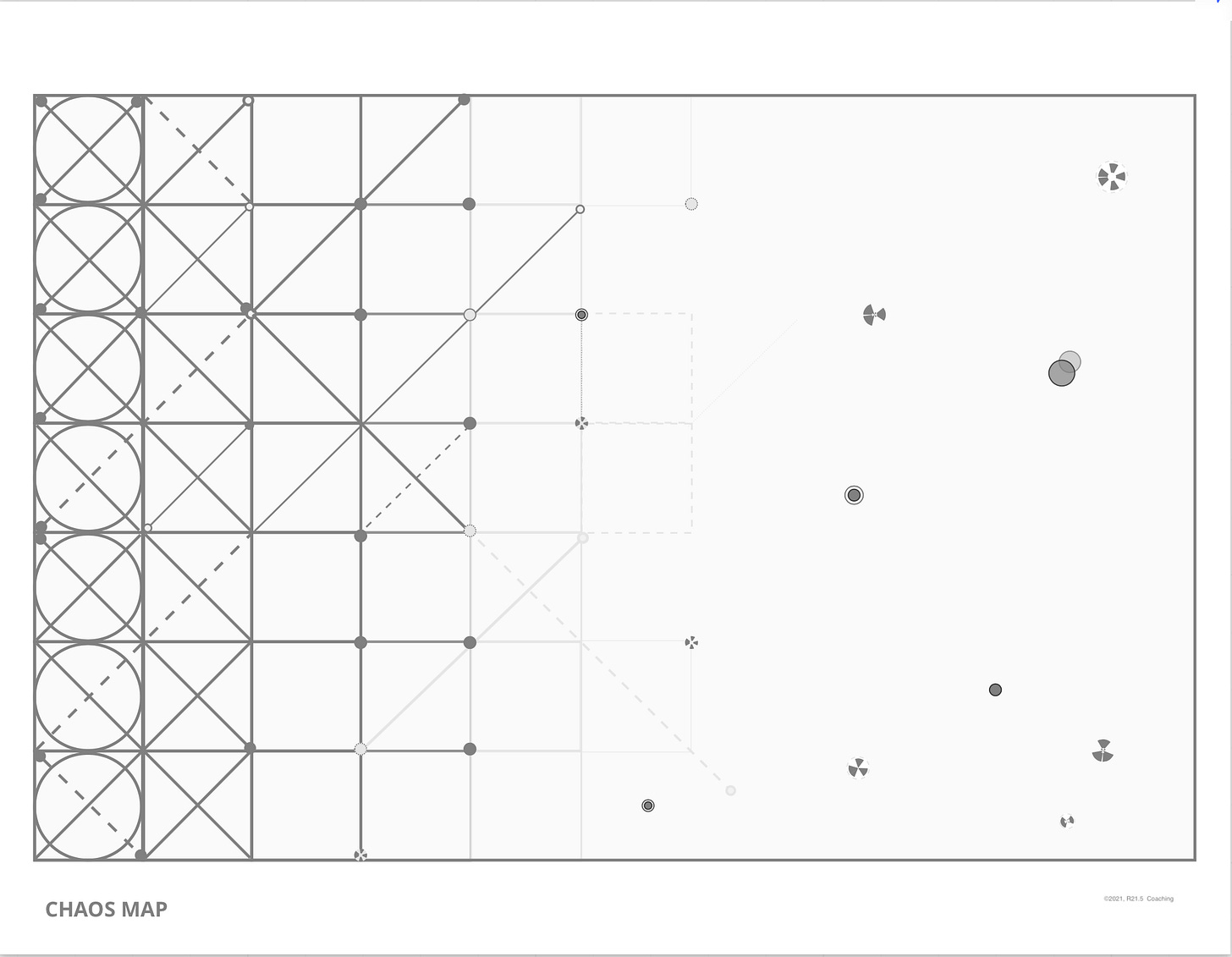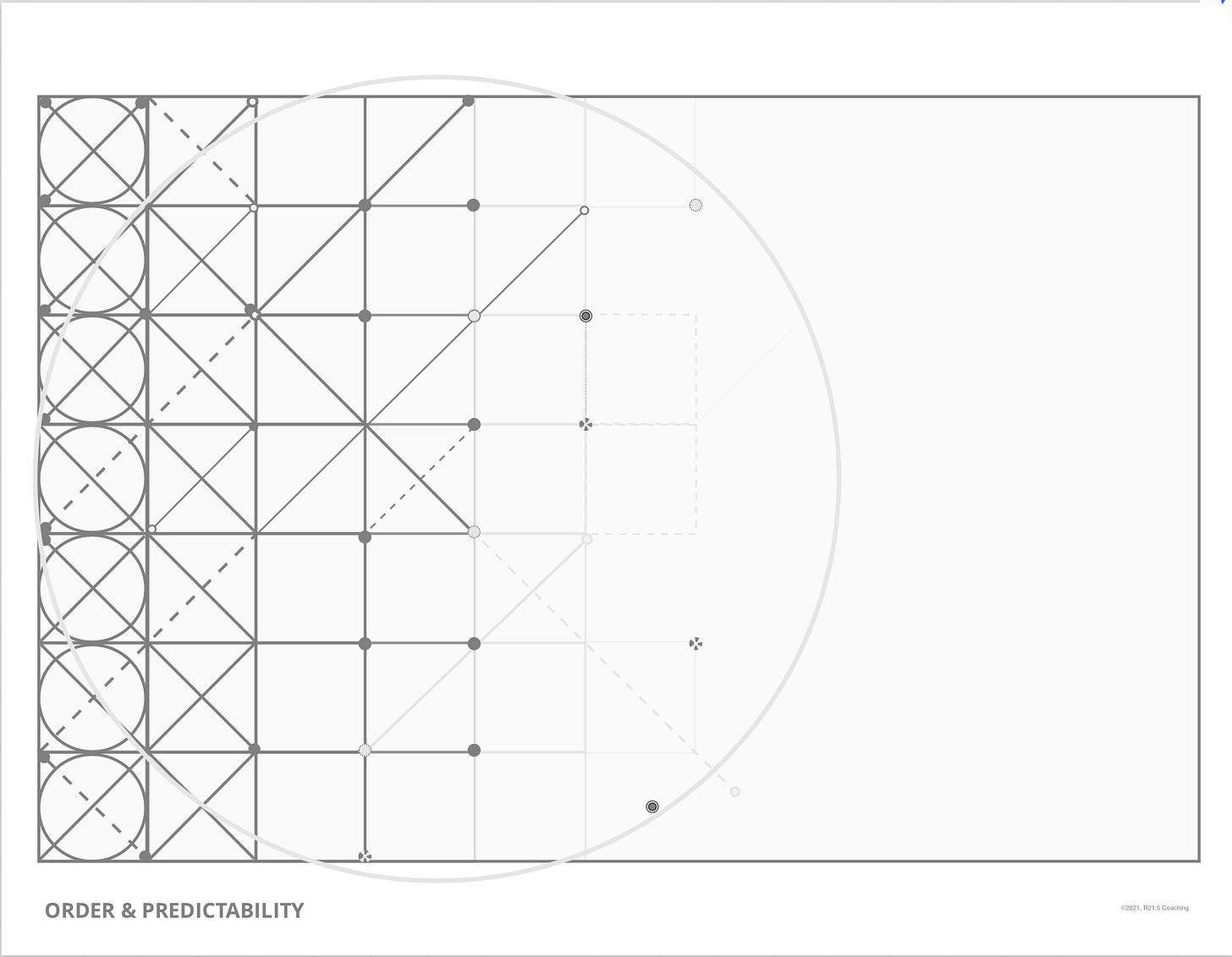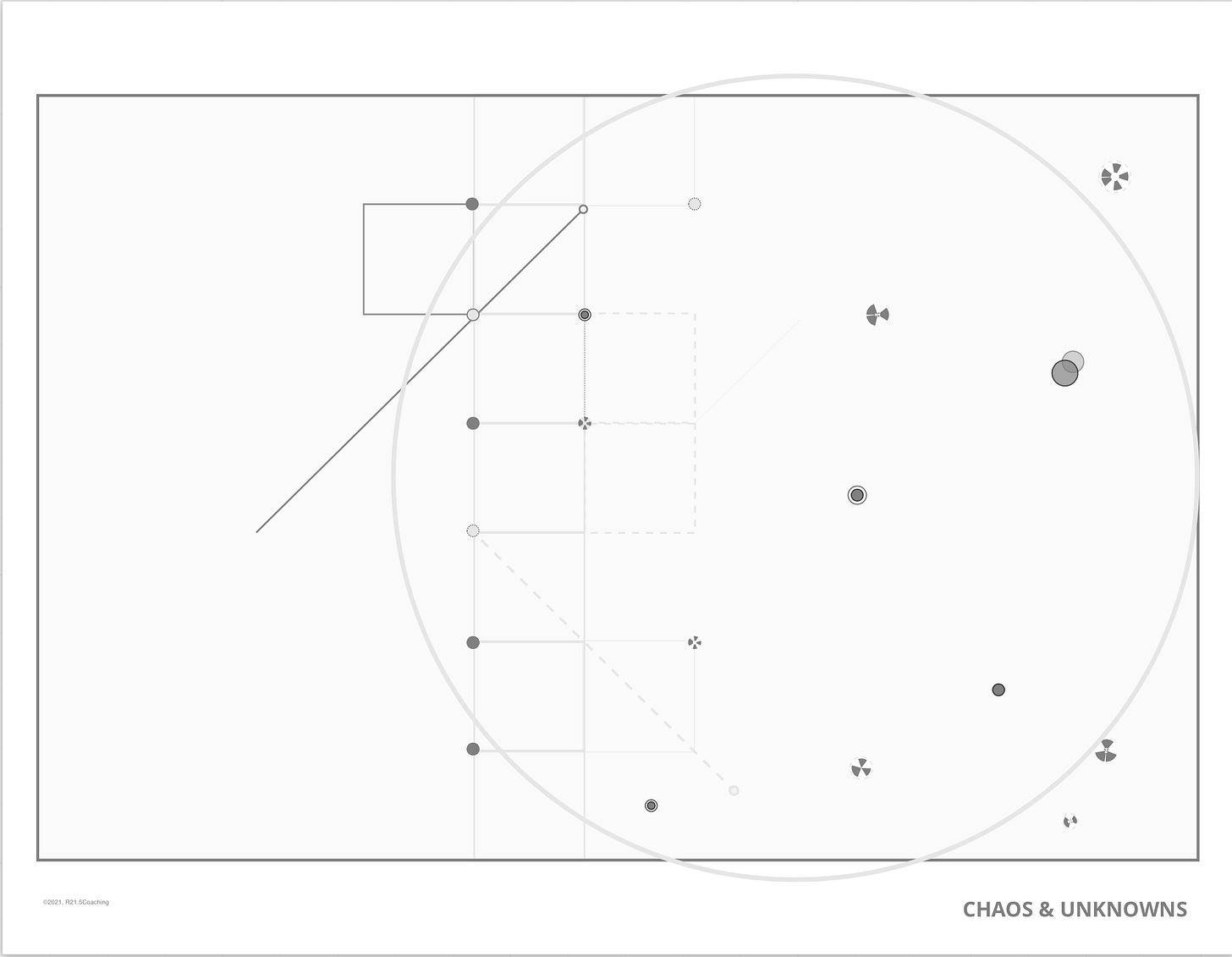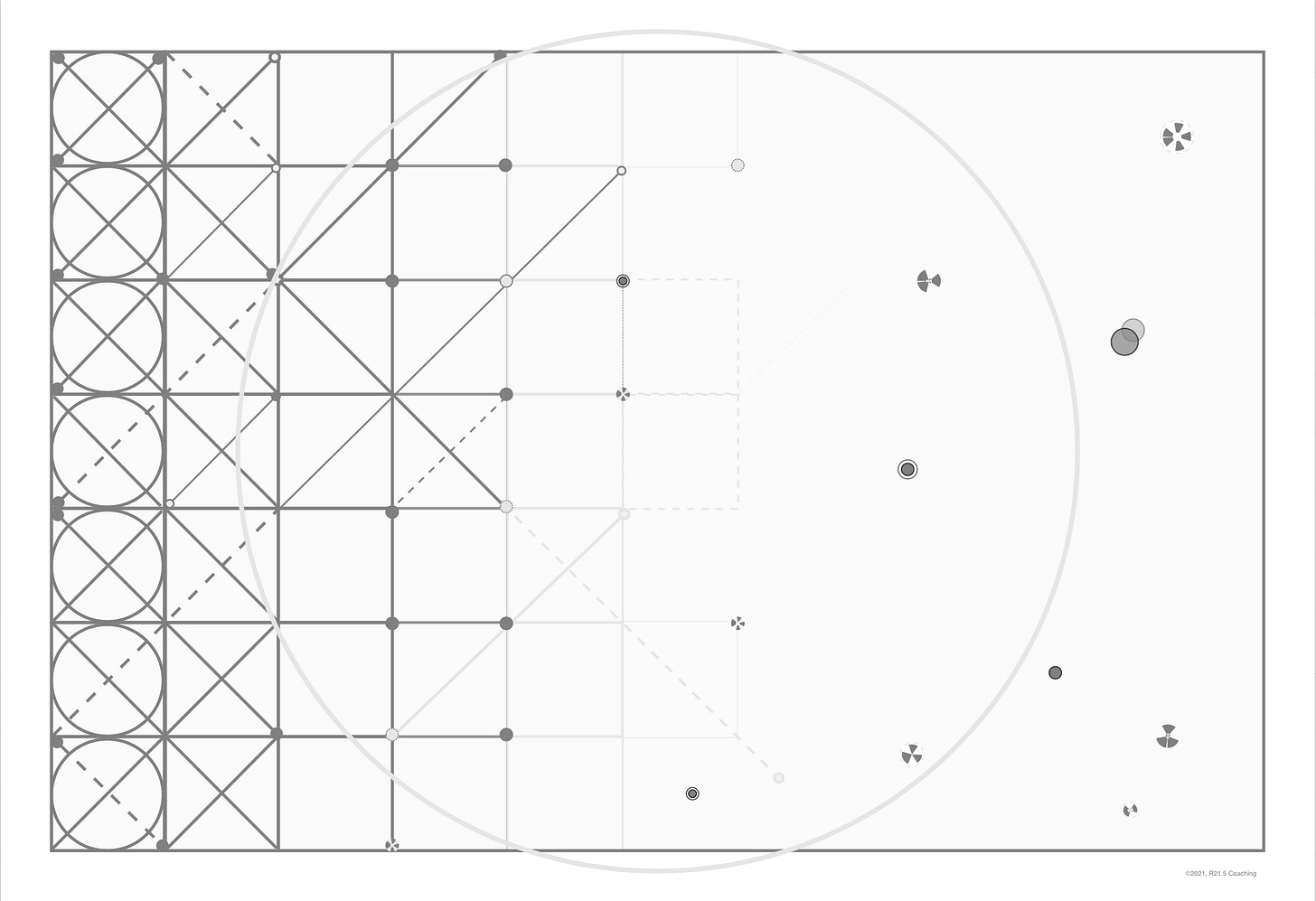Welcome to Creative\\Proofing, a space for asking questions about the good life: what it is, how to design our own, and how to live it well.
In this issue:
Introduction & Background
A Creative\\Proof Theory of the Chaos Map
Where We Go Next
Creative\\Curations
Introduction & Background
For the past year or so, I've been working on a project called The Creative\\Proof Life (TC\\PL). TC\\PL arose out of my discovery of Notion, my desire to start my own business, and a life-long frustration with myself at never getting anywhere with my dreams and ideas. I wanted a way to get traction on the things that I always said mattered to me, but I rarely did anything about. The Creative\\Proof Life is my answer to that frustration, a means of clarifying what I want in life, and then designing practical systems and steps to help me to get there. And, I thought that what I'd learned in the process might be helpful to others, too.
When I first developed TC\\PL, it incorporated a lot of what I've learned about the Enneagram over the last few years, which I think offers a vocabulary for self-awareness, and tools for intra- and inter-personal communication. I soon began to focus more on the triads, or centers of intelligence: the heart, head, and hands. I believe that when we listen to our hearts, heads, and bodies, and learn to integrate them into a coherent, whole self, we can indeed do the things that matter most to us. Previous issues of Creative\\Proofing work through different aspects of these centers, and how we cultivate the innate capacities that come through each. Yet, I found myself feeling limited by this structure, not able to explore all the ideas I glimpsed within these topics.
I tried situating The Creative\\Proof Life within the hero's journey, famously described by Joseph Campbell, among others. Understanding ourselves as going on an adventure that tests and changes us, returning in victory back to where we started... Who wouldn't resonate with such a tale in the process of trying to change? But, I found the structure of the hero's journey also had some limitations. The shape of the journey, when presented visually, goes in a circle, cycling through each stage, and ending largely where it began. For all the motion through the cycle, it doesn't allow a lot of exploration off track (and quite frankly, it seems like going off-road is when the real adventure happens, anyway).
I began to worry that TC\\PL had no larger structure, that my efforts to uncover a bigger story were irrelevant to the tool itself. Was I making too much out of a simple thing? Was I trying to force it to do something it wasn't actually designed for? Did I just need to let the thing be itself? My impulse to integrate a grand unifying theory with practical realities started to feel a bit ridiculous.
I think that, in order to feel a need for something like TC\\PL — to identify a new destination, create a new map, design new tools — we have to have arrived at some sort of crossroads in life. Something that prompts a shake-up of everything familiar and routine. We find ourselves in new territory, traveling unfamiliar landscapes, with strange companions. We carry with us our old lives, pick up new pieces of knowledge, and struggle to discern where to go and how to get there. Designing new maps and tools provides us with a sense of agency and empowerment, but these things work best when we have a means of locating ourselves on the journey.
A Creative\\Proof Theory of the Chaos Map
Recently, I was introduced to the Chaos Map, and its creator Paul N. Johnson. I found myself immediately captivated by this simple, yet comprehensive way of visualizing the relationships between self, others, and the myriad elements of life. I kept revisiting his website, trying to figure out how I might interact with this unique map of our conceptual world. As Paul describes it, he first came up with the Chaos Map as a way to locate the various personalities and functions of team members in relation to each other, showing natural affinities, potential gaps, and opportunities in a given environment or situation.
Then one day, it clicked for me. The Chaos Map offers us a visual metaphor for life, with its mix of order and chaos, structure and anti-structure, predictability and surprise. It helps identify where we are in our personal and social journeys, as well as lets us see the possible movements we can make within our field of activity. I'm not too familiar with chess, but what I do know is that each piece on the board has a specific purpose, which both encourages and limits the movements available to that piece. Likewise with the Chaos Map: depending on our location within its field, and our ultimate destination, we have options more or less available to us, movements we can take or not take, outward and inward journeys we can complete. Each location or stage has specific clues and responses that help us discern our next steps, and thrive in the transition from stability to chaos to cohesion, a journey that can be both frightening and fruitful.
For most of us, we spend a lot of time on the left side of this map. We experience some rhythm and routine to our days, anticipating predictability and stability for the most part. Life has a lot of structure in this stage.
Sometimes, that stability gets disrupted. Perhaps it's a crisis, a tragedy that starts our journey to the right of the map. Perhaps it's a persistent restlessness that causes us to look beyond the fields we know so well. Whatever the reason, we begin to move into chaos and unknowns, from our old ways of being toward some new, as-yet-undefined life. This space between old and new becomes the site of a liminal journey, an in-between space of exploration and discovery with ambiguous boundaries that we learn to navigate with new perspectives and skills.
At the far right of the Chaos Map, all we have then is a myriad of pieces scattered across the field: elements of our previous life, new dreams, potential paths, new concepts that we don't know quite what to do with yet. It's a place full of potential and possibility, but also of letting go and grief: our old lives are closed to us now, and the choices we make here will limit what new paths we can take. Journeying through the liminal allows us to gain clarity and learn discernment to answer the questions of what matters, what we want to do, and who we want to become.
Where We Go Next
Just like all journeys, we aim for a destination, some sort of arrival and resettlement. But as the ancient Greek philosopher Heraclitus points out, you can never step into the same river twice: it's not the same river, and we're not the same person. The goal of returning is not to resume our previous stability, or even to rebuild the same structures. It's to move toward re-formation, a new whole that incorporates the old, the new, and the journey we've made between them.
The practice of traveling around the Chaos Map, of designing a Creative\\Proof Life is finding that tension between total order and total chaos, engaging the journey with agency and mindfulness. Sometimes we have no choice but to launch out from stability and make a new life out of the old. But I am convinced that there's value to learning how to do this consistently and regularly, without needing a crisis to get us started. How do we learn to travel our Chaos Maps with resourcefulness, rather than flying about like a ping-pong ball?
And so, we arrive where we started, and see things with new eyes (I hope).
The Creative\\Proof Life as I originally envisioned it helps us collect what we learn from each of our centers. By asking questions like "what do I feel? what do I know? what do I sense?," we can locate ourselves on the journey around the Chaos Map. The answers to these questions remind us that we already have inner guides available to us at any stage, at any location on the map. Our task is to come awake to what those guides are telling us, to pause long enough to listen, attend, and prepare for the next step. And then, to take that step with confidence and hope.
I look forward to exploring here in Creative\\Proofing what it means to come awake to ourselves and to our lives, and to be hopeful, creative, and wise in the journey. These explorations may take us to the distant past or the near future; from global events to inner realities; through art, philosophy, theology, technology, and the myriad mysteries we encounter in the universe — whatever illuminates the path. I hope you'll join me.
Let’s be hopeful, creative, and wise, together.
Shalom,
Megan.
Update, Oct. 2021
After reflection, I’ve changed my vocabulary from using Paul Johnson’s “Chaos Map” to that of my own phrase “The Liminal Space.” This seems the best way to honor the inspiration of that original idea while exploring its possibilities for my own contexts and goals.
Creative\\Curations
Paul Johnson’s Chaos Map.
Desires and How We Get Them.
Kream of the crop (gonna have to work on the puns).
R21.5 is built on the hope of reciprocal generosity: I want to share what I find beautiful and meaningful, and I'd love for you to do the same. If you're inspired by anything I share, it would mean so much if you subscribe, share it with others, drop me a line and let me know, or pay according to the value it has for you. No matter what, I hope we can create and learn together.








